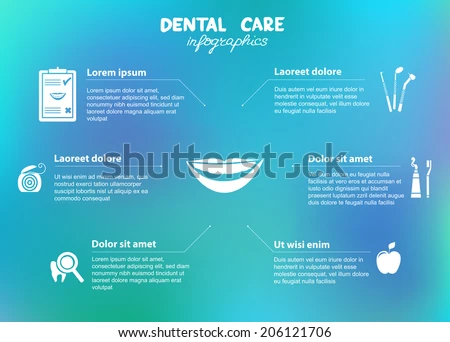The Development Of Dental Surgery: Cutting-Edge Innovations And Advancements Influencing The Field
The Development Of Dental Surgery: Cutting-Edge Innovations And Advancements Influencing The Field
Blog Article
Staff Writer-Petersson Schultz
Welcome to the world of dental surgery, where technologies and breakthroughs are forming the future of the area! In this interesting world, you'll witness the transformative power of robotics, the sophisticated wonder of 3D printing, and the game-changing effect of minimally intrusive strategies.
The future of dental surgery holds an assurance of precision, effectiveness, and enhanced client outcomes. With the help of innovative robotics, specialists are able to execute complicated procedures with better accuracy and control.
3D printing modern technology is transforming the production of dental implants and prosthetics, offering personalized remedies that fit seamlessly into each client's special composition.
In addition, minimally invasive strategies are minimizing post-operative discomfort and healing time, permitting individuals to return to their every day lives quicker.
Prepare yourself to explore the interesting innovations and developments that are improving the landscape of dental surgery!
Developments in Robotics
One major advancement in oral surgery is using robot technology, which enables accurate and reliable surgical procedures. With the help of robot systems, dental doctors have the capability to carry out complicated surgeries with enhanced precision, reducing the threat of human error.
These robotic systems are outfitted with innovative imaging innovation and precise instruments that make it possible for doctors to browse through complex anatomical frameworks easily. By making https://how-to-whiten-teeth-hydro10198.slypage.com/33572714/how-much-time-do-oral-implants-last-variables-that-impact-longevity of robotic modern technology, cosmetic surgeons can accomplish better surgical accuracy, leading to enhanced client results and faster recuperation times.
On top of that, using robotics in oral surgery allows for minimally intrusive treatments, decreasing the injury to bordering cells and advertising faster healing.
3D Printing in Oral Surgery
To enhance the field of oral surgery, you can discover the subtopic of 3D printing in dental surgery. This innovative innovation has the prospective to revolutionize the method oral doctors operate and treat patients. Here are 4 essential methods which 3D printing is forming the field:
- ** Customized Surgical Guides **: 3D printing enables the creation of highly precise and patient-specific surgical guides, improving the precision and efficiency of procedures.
- ** dental implants near me **: With 3D printing, oral surgeons can create customized implant prosthetics that completely fit a person's one-of-a-kind anatomy, resulting in far better end results and patient fulfillment.
- ** Bone Grafting **: 3D printing makes it possible for the production of patient-specific bone grafts, reducing the need for typical grafting methods and enhancing recovery and recuperation time.
- ** Education and Training **: 3D printing can be utilized to produce practical medical designs for instructional functions, enabling dental doctors to practice complex procedures before executing them on patients.
With its potential to improve precision, customization, and training, 3D printing is an amazing development in the field of dental surgery.
Minimally Intrusive Techniques
To even more progress the field of oral surgery, accept the capacity of minimally intrusive methods that can substantially benefit both cosmetic surgeons and individuals alike.
Minimally intrusive strategies are changing the field by decreasing medical trauma, lessening post-operative pain, and accelerating the recovery process. These techniques include using smaller sized cuts and specialized tools to carry out treatments with precision and effectiveness.
By utilizing innovative imaging technology, such as cone light beam calculated tomography (CBCT), doctors can accurately plan and implement surgeries with minimal invasiveness.
Additionally, the use of lasers in dental surgery allows for exact cells cutting and coagulation, causing decreased bleeding and decreased recovery time.
With minimally intrusive methods, clients can experience faster recovery, reduced scarring, and enhanced results, making it an essential aspect of the future of oral surgery.
Conclusion
So, as you can see, the future of dental surgery is extremely encouraging, with amazing innovations and breakthroughs shaping the area.
From the advancements in robotics to making use of 3D printing and minimally invasive techniques, dental cosmetic surgeons are revolutionizing the means they offer care.
While some may stress over the potential price connected with these developments, it is necessary to keep in mind that these technologies eventually boost person end results and lower recovery time, making them well worth the investment over time.
